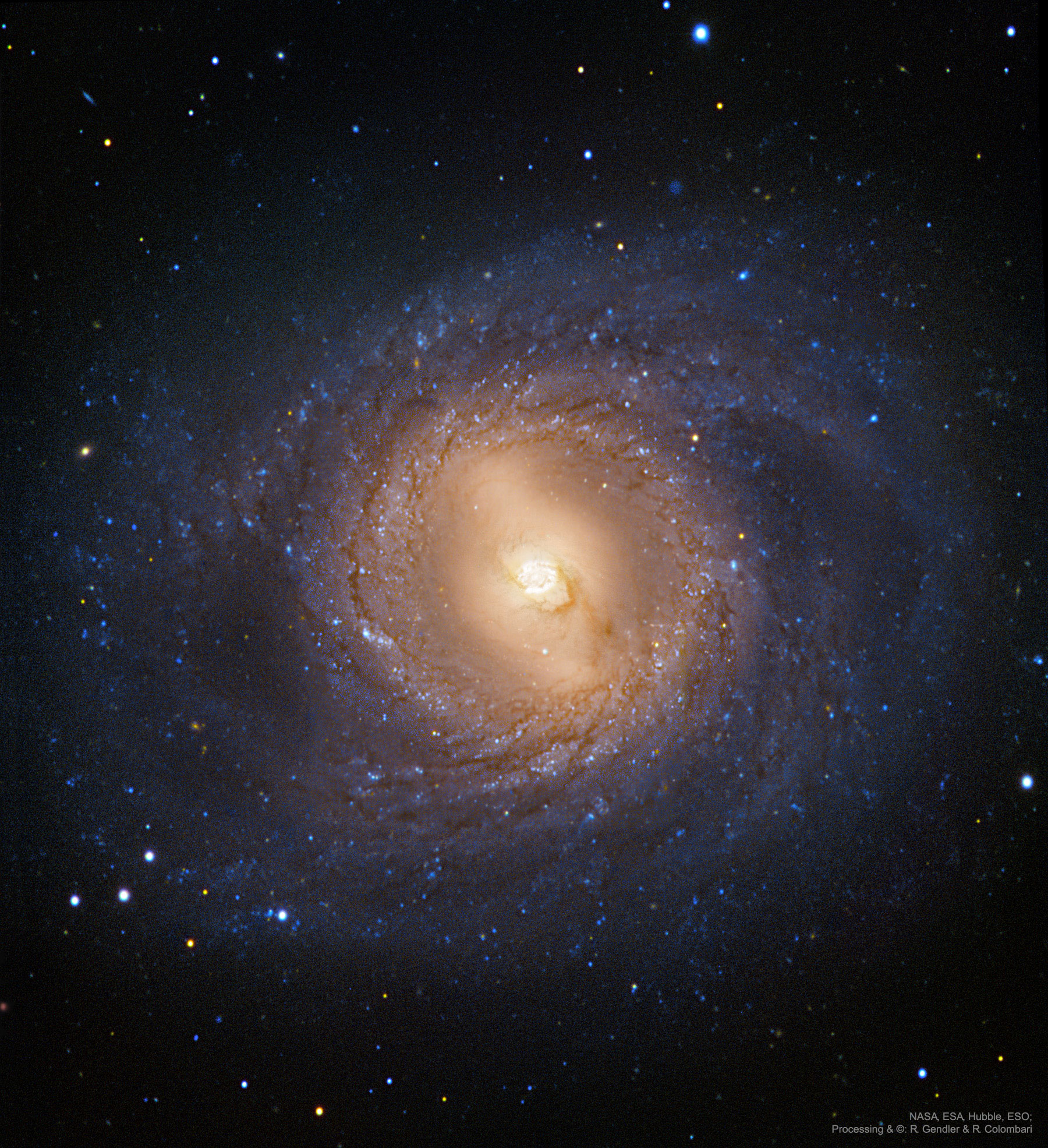2019 May 29
M95:带内环的螺旋星系
图片来源:NASA, ESA, Hubble, ESO, Amateur Data;
处理和版权: Robert Gendler & Roberto Colombari
说明:为什么一些螺旋星系的中心有一个环?首先也是最重要的,M95是一个巨大而美丽的棒状螺旋星系的近距离例子之一。从哈勃望远镜和几架地面望远镜拍摄的照片中可以看到,在明亮的蓝色星系团、黑色尘埃带、数十亿颗微弱恒星的漫射光以及横跨星系中心的一条短条状物的共同作用下,螺旋形的手臂伸展开来。然而,令许多天文学家感兴趣的是,就在中央棒的外面,环绕星系中心的核环是可见的。虽然这个光环的长期稳定性仍是一个研究课题,但观察表明,它目前的亮度至少是通过恒星形成的短暂爆发而增强的。M95,也被称为NGC 3351,跨度约5万光年,距离地球约3000万光年,可以用小型望远镜在狮子星座(Leo)附近观测到。
M95: Spiral Galaxy with an Inner Ring
Image Credit: NASA, ESA, Hubble, ESO, Amateur Data
Processing & Copyright: Robert Gendler & Roberto Colombari
Explanation: Why do some spiral galaxies have a ring around the center? First and foremost, M95 is one of the closer examples of a big and beautiful barred spiral galaxy. Visible in the featured combination of images from Hubble and several ground based telescopes are sprawling spiral arms delineated by open clusters of bright blue stars, lanes of dark dust, the diffuse glow of billions of faint stars, and a short bar across the galaxy center. What intrigues many astronomers, however, is the circumnuclear ring around the galaxy center visible just outside the central bar. Although the long term stability of this ring remains a topic of research, observations indicate its present brightness is at least enhanced by transient bursts of star formation. M95, also known as NGC 3351, spans about 50,000 light-years, lies about 30 million light years away, and can be seen with a small telescope toward the constellation of the Lion (Leo).



